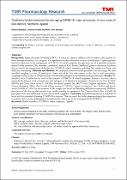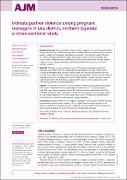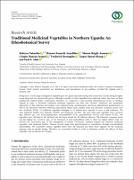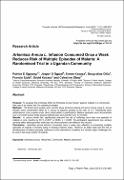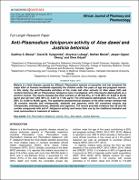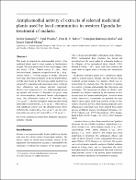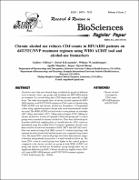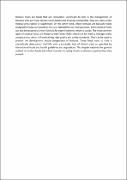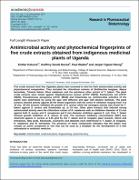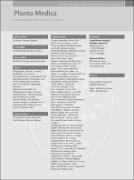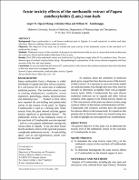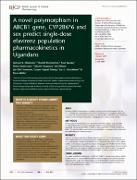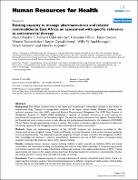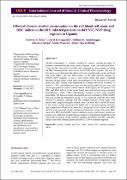Department of Pharmacology
Browse by
Recent Submissions
-
Traditional herbal remedies for managing COVID-19 major symptoms: A case study of Kole district, Northern Uganda
(TMR Pharmacology Research, 2021)Background: Today, the world is battling COVID-19 which has claimed millions of lives within a short period. As biotechnological research is in progress, it’s expedient to explore alternative sources of medication. Exploring ... -
Intimate partner violence among pregnant teenagers in Lira district, northern Uganda: a cross-sectional study
(African Journal of Midwifery and Women's Health, 2020)Background/aims Intimate partner violence during pregnancy is associated with adverse health outcomes for mothers and their unborn babies. Whereas the literature on intimate partner violence in the general population is ... -
Traditional Medicinal Vegetables in Northern Uganda: An Ethnobotanical Survey
(International Journal of Food Science, 2021)Background. A wide range of indigenous vegetables grow in Uganda especially during rainy seasons but scarcely during droughts, except those that are commercially grown. Although a number of these vegetables have medicinal ... -
Chronic ethanol use in alcoholic beverages by HIV-infected patients affects the therapeutic window of stavudine, lamivudine and nevirapine during the 9-month follow-up period: using chronic alcohol-use biomarkers
(Journal of Basic and Clinical Physiology and Pharmacology, 2013)Background: Chronic ethanol use is a global problem including among HIV-infected patients on stavudine/ lamivudine/nevirapine (d4T/3TC/NVP) regimen. The study determined the effect of chronic ethanol use on the therapeutic ... -
Artemisia Annua L. Infusion Consumed Once a Week Reduces Risk of Multiple Episodes of Malaria: A Randomised Trial in a Ugandan Community
(Tropical Journal of Pharmaceutical Research, 2012)Purpose: To evaluate the protective effect of Artemisia annua infusion against malaria in a community that uses it as herbal ‘tea’ for malaria prevention. Methods: 132 flower farm workers who met the study inclusion ... -
Anti-Plasmodium falciparum activity of Aloe dawei and Justicia betonica
(African Journal of Pharmacy and Pharmacology, 2013)Malaria is a fatal disease caused by different Plasmodium species of parasites and has remained the major killer of humans worldwide especially the children under five years of age and pregnant women. In this study, the ... -
Antiplasmodial activity of extracts of selected medicinal plants used by local communities in western Uganda for treatment of malaria
(African Journal of Ecology, 2007)This study investigated the antiplasmodial activity of ten medicinal plants used to treat malaria in Southwestern Uganda. The study plants were Bothlioclines longpipes (Olive and Hiern), N.E.Br., Toddalia asiatica (L.) ... -
Chronic alcohol use reduces CD4+counts in HIV/AIDS patients on d4T/3TC/NVP treatment regimen using WHO AUDIT tool and alcohol-use biomarkers
(Research & Reviews in BioSciences, 2014)Alcohol is one of the most abused drugs worldwide by people of different socio-economic status, age groups and including the HIV/AIDS patient on treatment. It is reward drug and a CNS depressant especially at high doses. ... -
Off-label antibiotic use among paediatric in-patients: a mixed-method prospective study at a tertiary hospital in southwestern Uganda
(International Journal of Clinical Pharmacy, 2020)Background The off-label use of drugs to treat children is a global practice attributed to the traditional exclusion of children from clinical trials mainly due to practical and ethical reasons. Off-label drug use carries ... -
Medical Foods and Infant Formulas
(Springer, 2020)Medical foods are foods that are formulated specifically to help in the management of diseases with particular dietary needs hardly met singly by normal diet. They are taken under medical prescription or supervision. On ... -
Antimicrobial activity and phytochemical fingerprints of five crude extracts obtained from indigenous medicinal plants of Uganda
(Research in Pharmaceutical Biotechnology, 2017)Five crude extracts from four Ugandan plants were screened in vitro for their antimicrobial activity and phytochemical composition. They included the chloroform extracts of Bothliocline longipes, Maesa lanceolata, Trimeria ... -
Antimalarial Activity of Aspilia pruliseta, a Medicinal Plant from Uganda
(Planta Medica : Journal of Medicinal Plant and Natural Product Research, 2010)Aspilia prulisetaSchweinf. (Asteraceae) is a medicinal plant in-digenous to Uganda and the neighboring countries of East Africa.It has been used extensively by the rural population for the treat-ment of fevers and malaria. ... -
Aflatoxins metabolism, effects on epigenetic mechanisms and their role in carcinogenesis
(Health, 2013)Chronic consumption of aflatoxin-contaminated foods is a global problem in both developing and developed countries especially where there is poor regulation of their levels in foods. In the body, aflatoxins (AFBs) mainly ... -
Acute toxicity effects of the methanolic extract of Fagara zanthoxyloides (Lam.) root-bark
(African Health Sciences, 2003)Background: Fagara zanthoxyloides is a well known medicinal plant in Uganda. It is used extensively in malaria and other infections. However nothing is known about its toxicity. Objective: The objective of the study was ... -
A novel polymorphism in ABCB1 gene, CYP2B6*6 and sex predict single-dose efavirenz population pharmacokinetics in Ugandans.
(British Journal of Clinical Pharmacology, 2009)AIMS Efavirenz exhibits pharmacokinetic variability causing varied clinical response. The aim was to develop an integrated population pharmacokinetic/pharmacogenetic model and investigate the impact of genetic variations, ... -
Community effectiveness of malaria treatment in Uganda---a long way to Abuja targets
(Annals of tropical paediatrics : Taylor & Francis, 2013)ntroduction: At the Roll Back Malaria summit for African countries in Abuja, the heads of state committed to ensure that by the year 2005 at least 60% of those suffering from malaria would have access to effective treatment ... -
Existing capacity to manage pharmaceuticals and related commodities in East Africa
(BioMed Central : Human Resources for Health, 2009)Background: East African countries have in the recent past experienced a tremendous increase in the volume of antiretroviral drugs. Capacity to manage these medicines in the region remains limited. Makerere University, ... -
Effects of intervention measures on irrational antibiotics/antibacterial drug use in developing countries
(Health, 2014)is a global problem, especially in developing countries. This results in an increased emer-gence of resistance to most common bacteria, higher cost of treatment, prolonged hospitaliza-tion and adverse drug reactions. ... -
Effect of chronic alcohol consumption on the red blood cell count and RBC indices in the HIV infected patients on d4T/3TC/NVP drug regimen in Uganda
(International Journal of Basic & Clinical Pharmacology, 2013)Alcohol consumption is common problem in Uganda. Among the types of alcohols consumed include beers, spirits, liqueurs, wines and traditional brew. These alcohols are easily accessible and consumed by many people including ... -
CYP2B6 genotype-based efavirenz dose recommendations during rifampicin-based antituberculosis cotreatment for a sub-Saharan Africa population
(Future Medicine Ltd: Pharmacogenomics, 2016)To assess genotype effect on efavirenz (EFV) pharmacokinetics, treatment outcomes and provide genotype-based EFV doses recommendations during for tuberculosis (TB)-HIV-1 cotreatment. Materials & methods: EFV concentrations from ...

